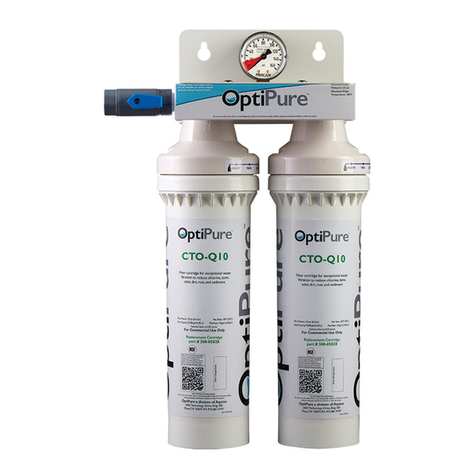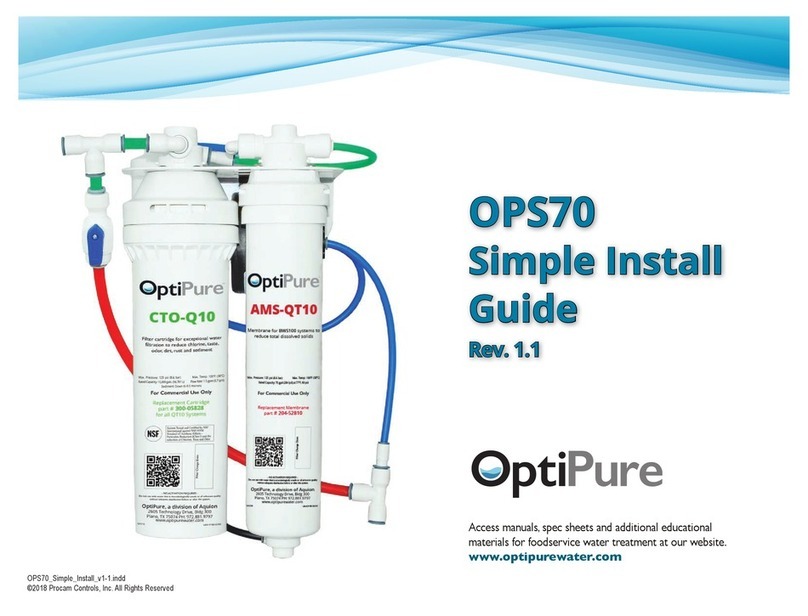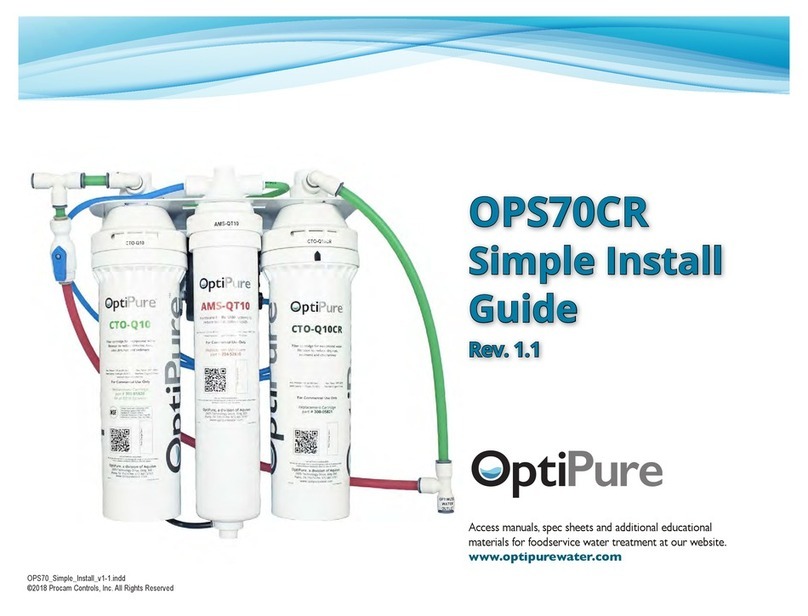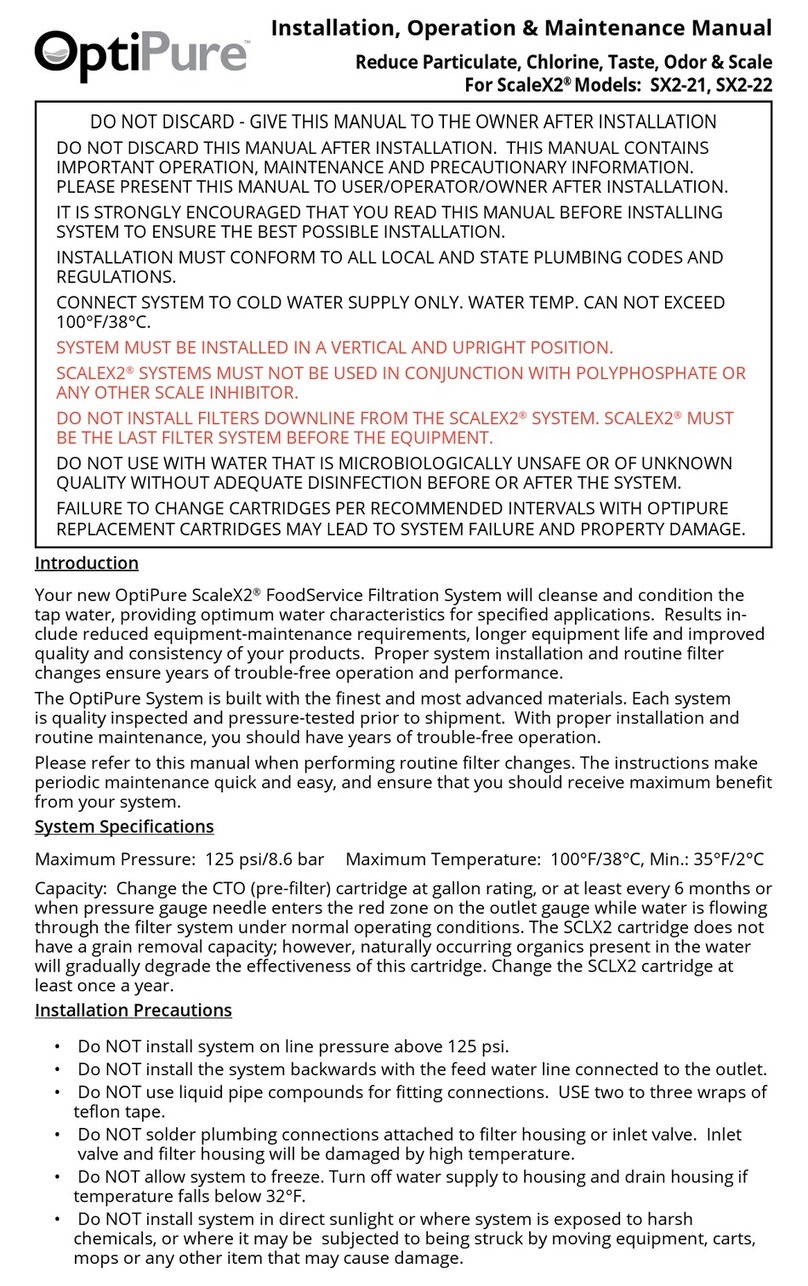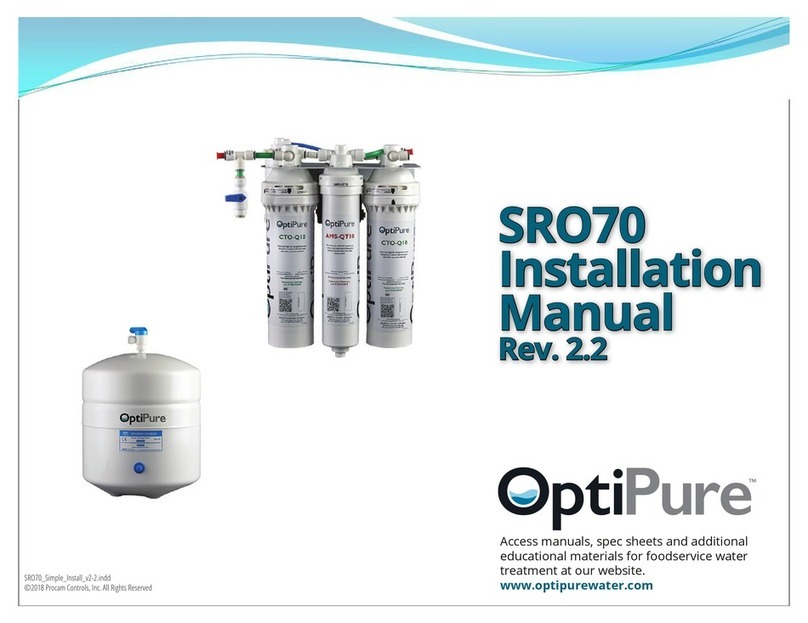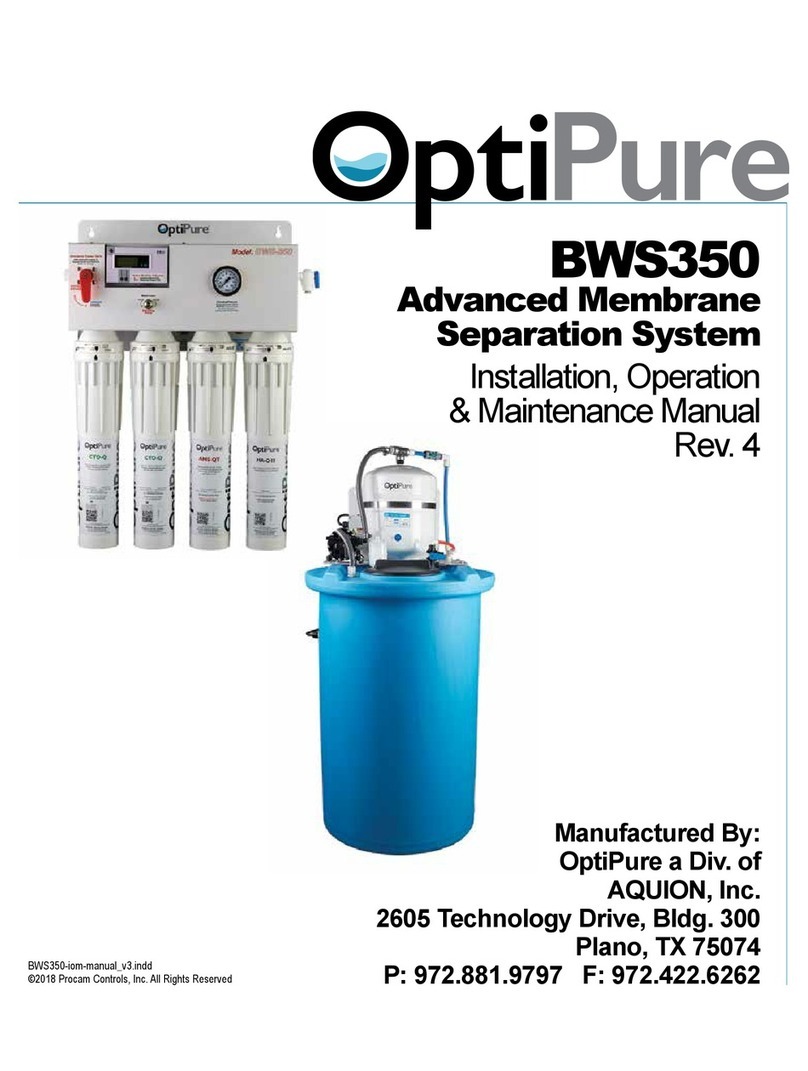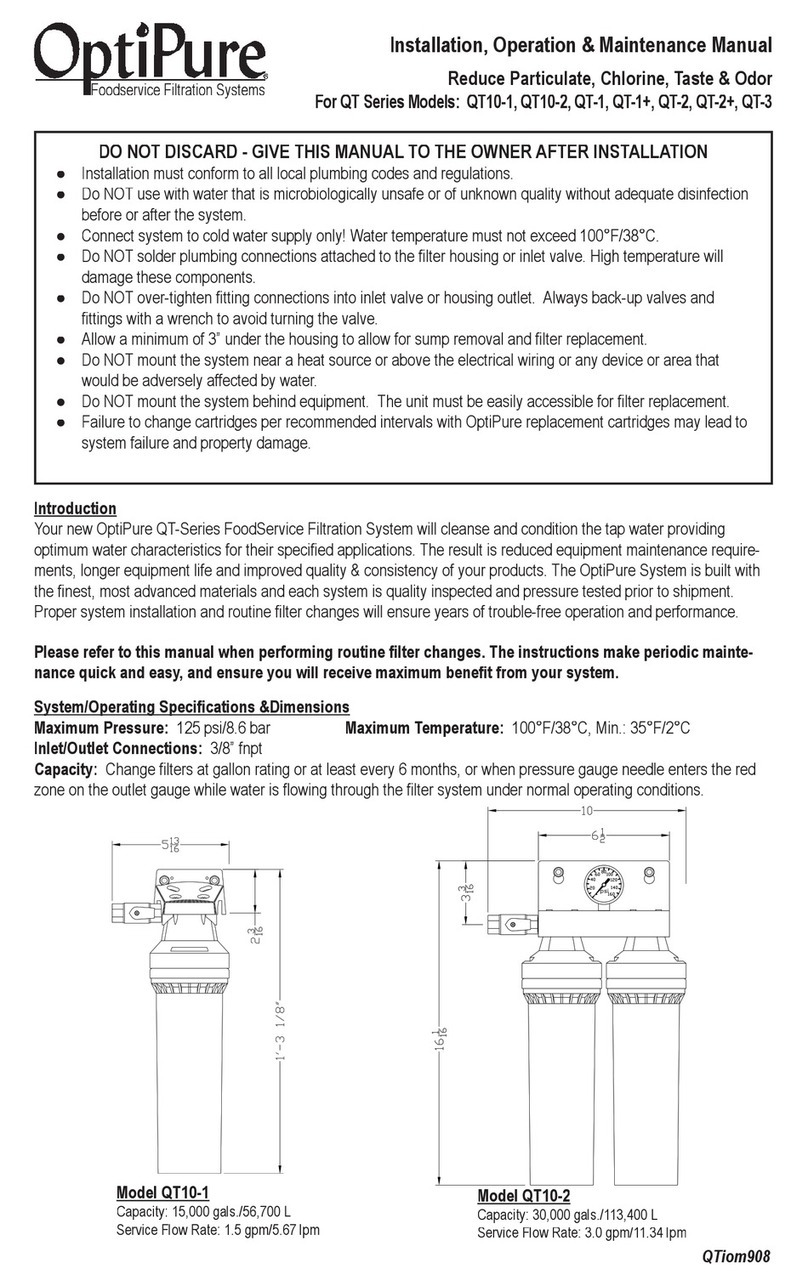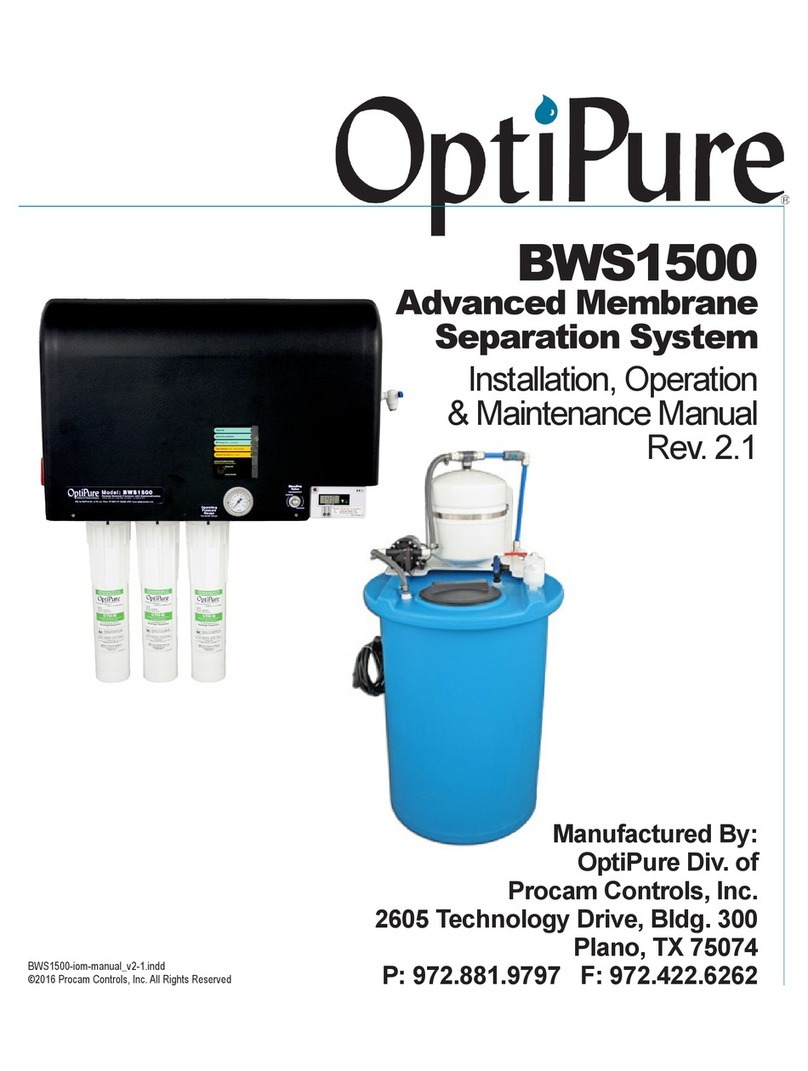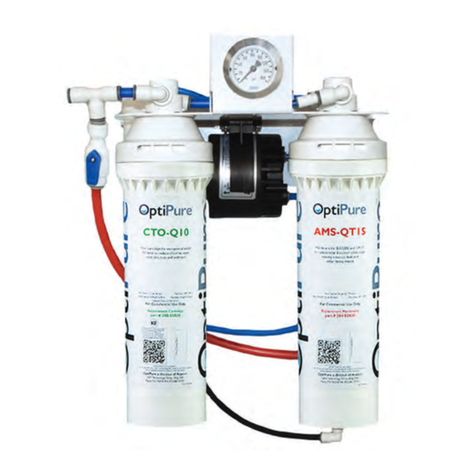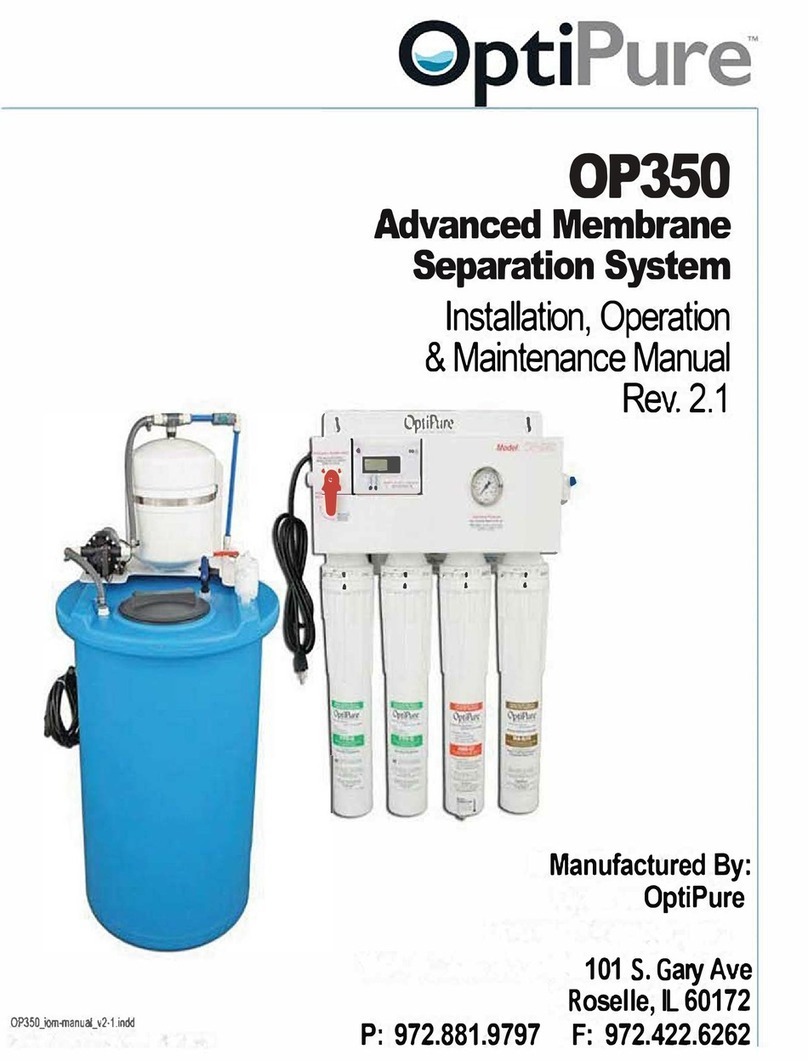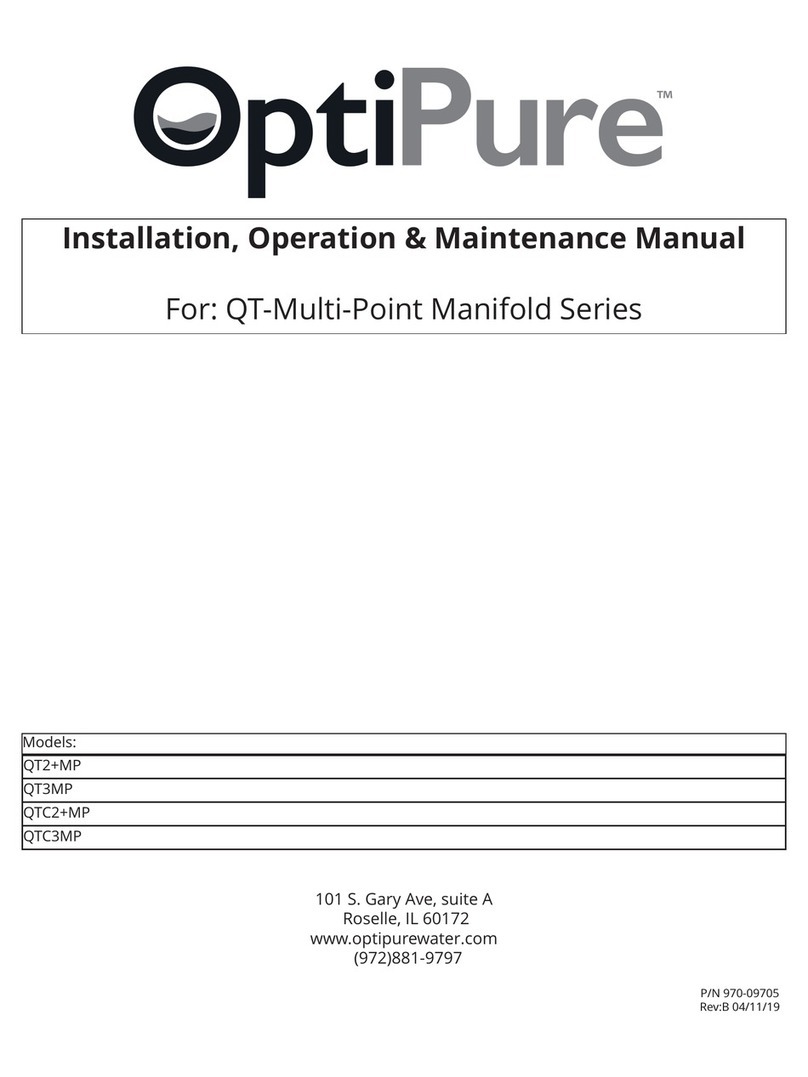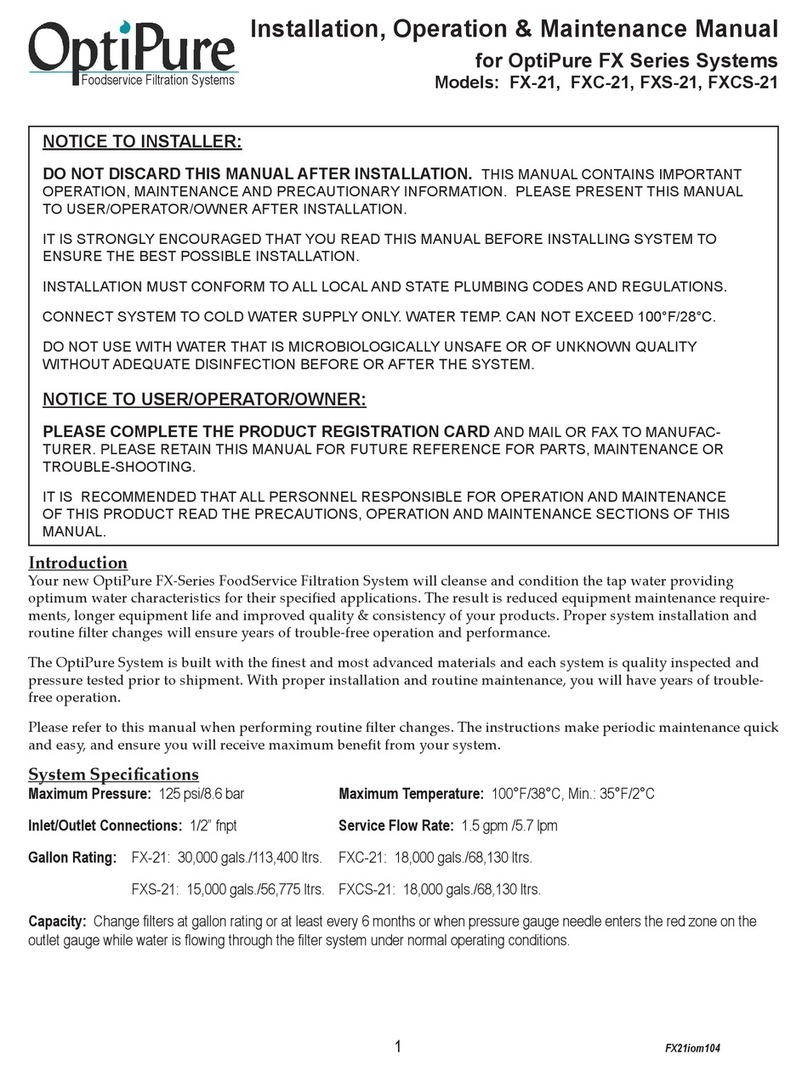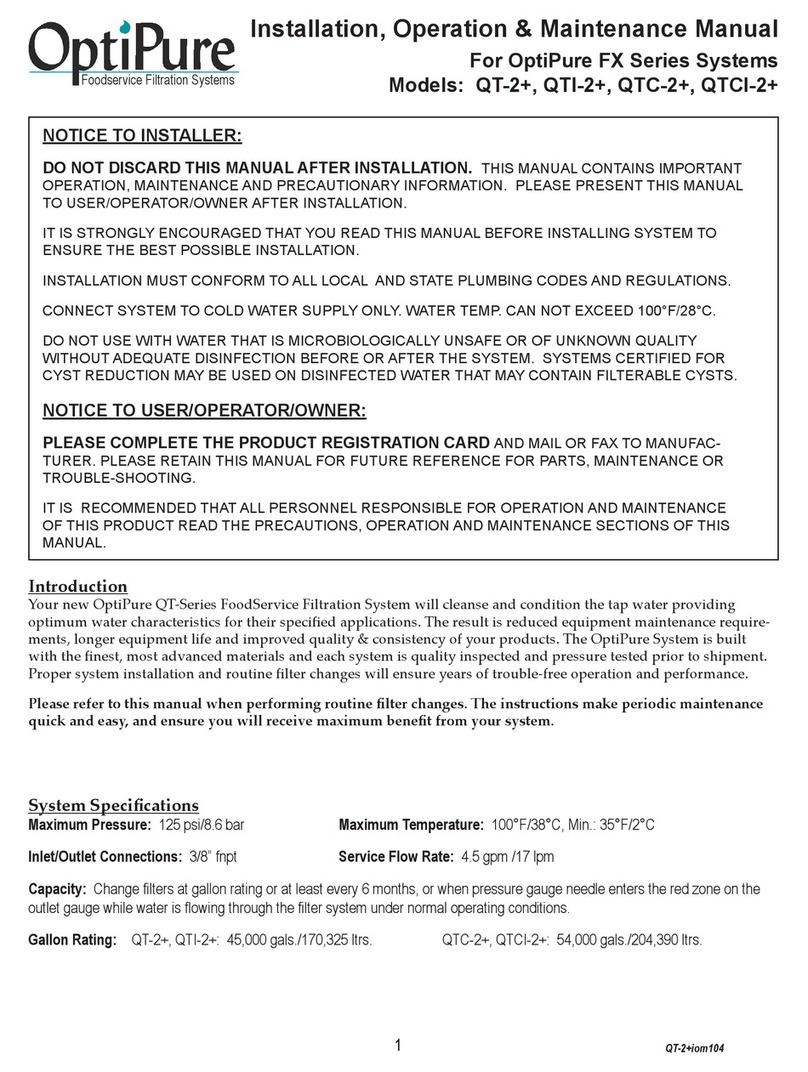
OP175 System Installation, Operation & Maintenance 9
System Start-Up
Refer to the illustration in “Typical Installation” (page
5).
IMPORTANT: Before proceeding, position the
Processor EMERGENCY BYPASS VALVE in the
“SERVICE” position, assure that the Buffer Tank Valve
is closed, and position the TANK INLET DIVERT
VALVE to bypass the tank (Blue Valve Handle pointing
up).
1. Slowly open the user-supplied WATER SUPPLY
VALVE and allow the lter housings to ll. Water
will begin to ow from the end of the 1/4” black
tubing routed to the drain. After some time, water
will begin to ow from the gray hose which is
temporarily routed to a bucket or the drain. Allow
several minutes to ush the system until water
ows smoothly from the gray hose and drain line.
Check all of the plumbing connections and correct
any leaks if necessary.
2. The tank must be ll to start-up and purge the
Repressurization Assembly. You can quickly ll the
storage tank using the “System Bypass” on the
processor. To do this use the following:
• Route the 1/2” gray hose from the OPTIMIZED WATER
OUTLET directly into the storage tank.
• Turn the EMERGENCY BYPASS VALVE on the processor
to “BYPASS.” This will allow feed water to bypass the
processor and quickly ll the storage tank.
• When the tank lls to approximately 14 gallons return
the processor EMERGENCY BYPASS VALVE to the
“SERVICE” position. When the tank is full, the shutoff
valve will close, stopping all ow.
• With the tank full, ensure the valve at the top of the BUFFER
TANK is in the OPEN position and that the 1/2” gray hose is
still directed into the storage tank.
3. Plug the power cord from the RP pump into the
outlet. Water should begin to ow rapidly from the
storage tank, through the RP assembly and back
into the storage tank through the gray hose. Allow
the pump to run for several minutes until all of the
air is purged from the Repressurization Assembly.
As the air is purged, the pump will run more
smoothly and the water ow from the gray hose
will become steady.
4. Unplug the RP Pump cord.
Connect to Equipment
You are almost ready to enjoy the benets of
Optimized Water. All that remains is to make the
connection for distribution to your equipment.
1. Remove the 1/2” gray hose from the storage tank
and replace and tighten the lid to the storage tank.
2. Complete the connection of the 1/2” gray hose
from the Optimized Water Outlet on the Processor
to the distribution line feeding the equipment that
will be using the Optimized Water.
3. Ensure that any valves or solenoid valves on the
connected equipment are closed. Plug the RP
pump back in. The pump will run and will ll the
Buffer Tank until the pressure in the Buffer TAnk
reaches 70 psi, and then the RP Pump will shut
off.
4. Open downstream valves at the equipment to
allow air to purge from the distribution lines. When
purging distribution lines do not allow the water
level in the storage tank to drop below 1/4 full.
Once purged and ushed, close the equipment
valves. When there is no demand for water the
pump will shut off automatically.
5. Turn the TANK INLET DIVERT VALVE to the
“TANK” position (blue valve handle pointing down).
Transition to Owner/Operator
The nal step is to meet with the owner/operator,
familarize them with the system and complete the post
installation check list.
The system is now in “normal operating” mode and
the storage tank will ll with Optimized Water from
the processor. Complete the “Check List” to “Conrm
Normal Operation and System Settings” (page 4 of the
“Quick Installation Guide”) with the Owner/Operator.
Allow the tank to ll before beginning operation of the
connected equipment.
1. Push the purple “POWER” button on the Water
Quality Monitor located on the upper left corner.
It will immediately display the “IN” or Optimized
Water TDS (Total Dissolved Solids) in PPM
(parts per million). Document this number as the
Optimized Water TDS.
2. Within 30 seconds, push the “OUT” button to
display the Membrane Permeate TDS and record
this number as the Permeate TDS.
Complete the Installation
Reading the TDS

